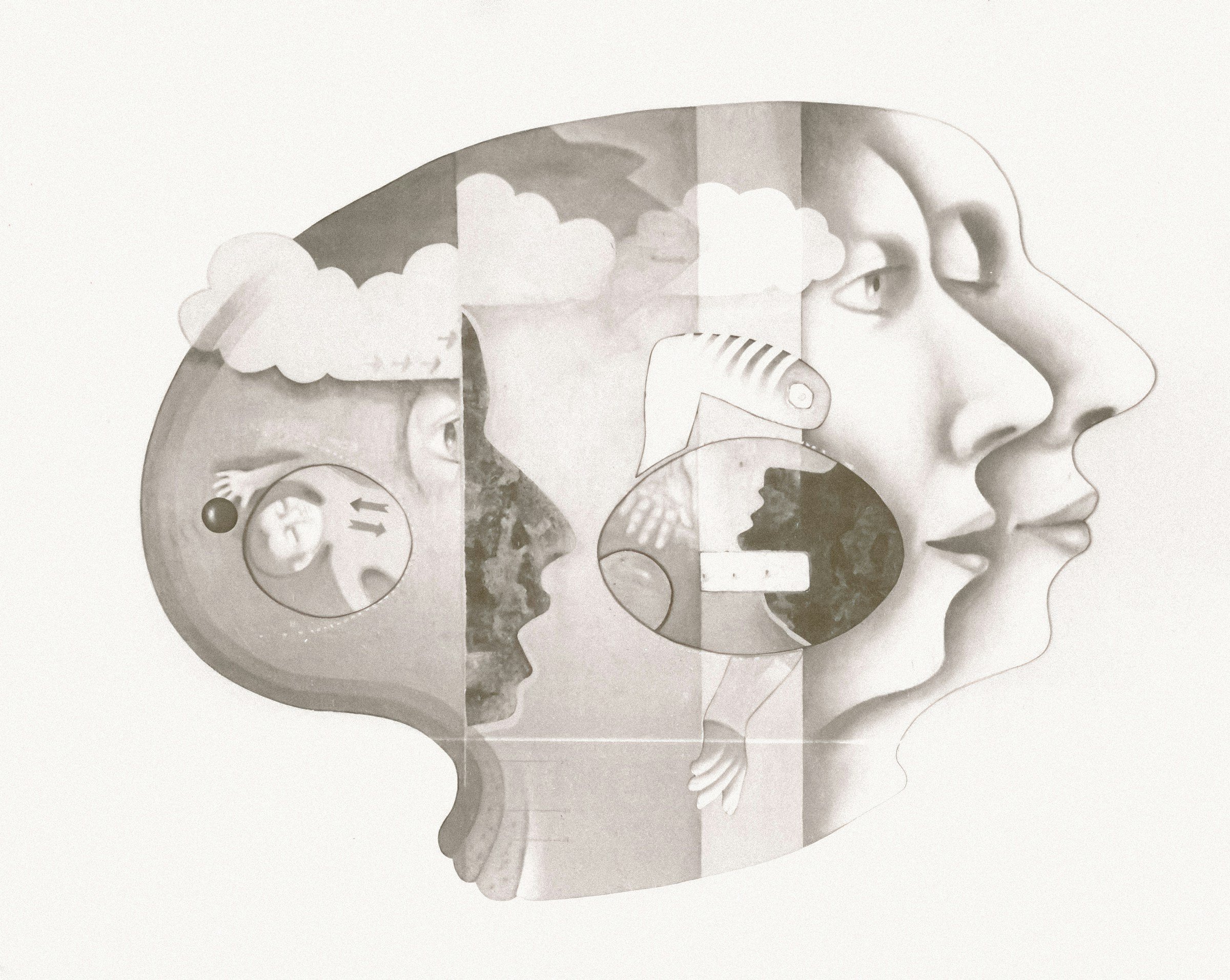What is Mind-Body Therapy? And How It Actually Helps with Chronic Pain
"Mind-body therapy" can sound a little… fuzzy. Maybe even like something you'd find next to a stack of crystals in a yoga studio, or buried inside a self-help book that promises the universe will cure you if you just think positively enough. But behind the phrase is something far more grounded — and far more powerful. Mind-body therapy isn’t about manifesting your way out of pain. It’s not about blaming yourself for symptoms or pretending you can breathe your way past a diagnosis. It’s a clinical, neuroscience-informed approach to healing that recognizes what research has shown us for years:
Your brain and body are in constant conversation — and that relationship shapes how you feel, how you cope, and how you heal.
So let’s clear it up: what is mind-body therapy, really? And why does it matter for people living with long-term pain, illness, or burnout?
Mind-Body Therapy Isn’t a Buzzword — It’s a Framework
Mind-body therapy isn’t just one technique. It’s a way of approaching healing that understands this truth:
What happens in the body impacts the mind. What happens in the mind impacts the body.
This isn’t just a metaphor — it’s how your nervous system is wired. When you’re in pain, under stress, or even anticipating discomfort, your brain and body exchange signals that can increase muscle tension, amplify pain perception, or trigger emotional responses like fear, fatigue, or anxiety. And when your brain is overloaded — with worry, trauma, burnout, or helplessness — your body feels it too: through sleep changes, gut symptoms, flares, immune shifts, or pain that seems to spike “for no reason.”
Mind-body therapy embodies this truth:
What happens in the body impacts the mind. What happens in the mind impacts the body.
And when it comes to chronic pain, we need this bigger picture.
Mind-body therapy looks at pain not just as a physical problem to fix, but as a whole person experience — one that’s shaped by nervous system regulation, emotional patterns, fear cycles, identity shifts, and how your body’s been treated (and responded) over time.
It can include things like:
Nervous system education
Somatic tracking (paying attention to body sensations in real-time)
Breathwork or grounding tools
Cognitive strategies (like CBT or ACT)
Exploring your relationship to stress, rest, and worthiness
Why Mind-Body Therapy Helps with Chronic Pain
Here’s what we know from pain science:
Pain isn’t just in the tissue — it’s in the nervous system.
When you’ve been in pain for a long time, your brain and body can get stuck in a loop:
The Pain-Stress Loop: A simple visual showing how chronic pain, stress, tension, and fear create a cycle that reinforces itself over time. Mind-body therapy helps interrupt this loop by addressing both physical and emotional triggers.
It’s not your fault. It’s your system trying to protect you. And over time, that system becomes extra sensitive — even after the original injury has healed.
Mind-body therapy helps you interrupt that cycle. It gives you tools to:
Calm the fear-pain loop
Understand your body’s cues
Reduce reactivity
Rebuild trust in your system
Make space for healing, not just managing
And just to be clear:
None of this means your pain isn’t real. It means your whole system deserves support.
If you’ve ever walked out of a medical office feeling like they only saw one part of your story — the lab result, the muscle spasm, the pain score — and that left you feeling unsatisifed, then you already understand why this framework matters. Mind-body therapy doesn’t ask you to choose between physical or emotional support. It treats you as a full system: a person with thoughts, memories, triggers, sensations, beliefs, and biology that all work together — for better or worse — to shape how you feel day to day. It’s not “all in your head.” It’s all in your whole self.
How I Use Mind-Body Work in Therapy
(for chronic pain, illness-related stress, and nervous system burnout)
Every therapist approaches this work differently — so here’s what mind-body therapy actually looks like in my practice.
You won’t get a one-size-fits-all plan or be told to “just breathe through it.” Instead, we’ll co-create care that centers your symptoms, your story, and your nervous system.
🧠 We explore how your body holds emotion and pain
You’ll start to notice how stress shows up physically — and how fear, shutdown, or perfectionism might be reinforcing your symptoms without meaning to.
🧰 You’ll get practical tools (when you’re ready)
I offer techniques from CBT, ACT, and somatic therapy to support pacing, emotional regulation, and identity healing. You won’t get overwhelmed with homework — just strategies that fit your real life.
🧬 We bring in the science — gently
Understanding the brain-body connection can reduce fear and empower healing. I explain the neuroscience behind pain, stress, and regulation in a way that makes sense (not like a textbook).
🌱 We hold space for what’s been missing
That might mean grief over the life you used to have. A pattern of pushing through until you crash. Or simply the ache of not feeling seen by other providers. We can sit with it — and also start to shift it.
This work doesn’t replace medical care. But for many of my clients, it adds the layer that’s been missing: your nervous system, your inner world, and the impact of chronic pain on your identity, relationships, and hope.
P.S. You don’t have to meditate in a cave or do yoga on a mountain to benefit from mind-body therapy.
This work is about real tools, in real life. Wherever you are — that’s where we start.
Learn more about therapy modalities I use.
Learn more about the locations I serve with online therapy for chronic pain.
This goat gets it. Healing doesn’t have to look mystical, majestic, or Instagram-worthy — sometimes it just means sitting down and starting where you are.
Is Mind-Body Therapy Right for You?
Most of the people I work with aren’t new to pain — they’re just new to being treated as a full person. They’ve gone through rounds of imaging, years of symptom management, maybe even past therapy experiences that didn’t speak to their body at all. They’re not looking for magic. They’re looking for care that meets them where they are — and makes sense of what’s been missing.
So, maybe this mind-body work is a fit for you if:
You’ve tried physical treatments, but still feel stuck or overwhelmed
You’re open to approaching healing in a different way
You’ve been told “it’s just stress,” but left without tools that actually help
You want practical support — and a therapist who sees your whole story
Mind-body therapy doesn’t require you to meditate on a mountain or master advanced yoga poses, I promise.
It just asks that you bring your body into the conversation — instead of leaving it out.
Not everything needs to be a breakthrough. Sometimes the first step is simply noticing you’re ready for something different.
Want to Take the Next Step?
At its core, mind-body therapy isn’t about doing more. It’s about doing differently. Learning how your nervous system reacts to fear, how your thoughts shape your physiology, how even self-blame or perfectionism can become physical — and then building tools to shift those patterns, gently and with support. This isn’t about “powering through.” It’s about healing in relationship: to your body, to your story, and to the part of you that’s still holding on to hope.
Here are two stepping stones to explore mind-body therapy in action.
TL;DR—
You don’t have to jump in all at once. It’s ok to start small.
P.S. If your brain likes the science, you’re not alone — mine does too.
Here are a few research-backed frameworks that support the ideas in this post:– Gate Control Theory of Pain (Melzack & Wall, 1965)
– Allostatic Load & Chronic Stress (McEwen, 1998)
– The Polyvagal Theory (Stephen Porges)
– Interoception & Emotion (Craig, 2009)
– Pain Neuroscience Education (Moseley & Butler)
These aren’t fringe ideas — they’re core concepts in modern neuroscience, pain care, and therapy. You deserve support that treats your brain and body like they matter. Because they do.
Whether you’re burned out from trying “everything” or just starting to explore what’s possible — I’m glad you landed here.









